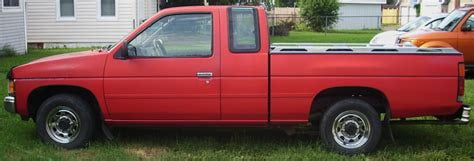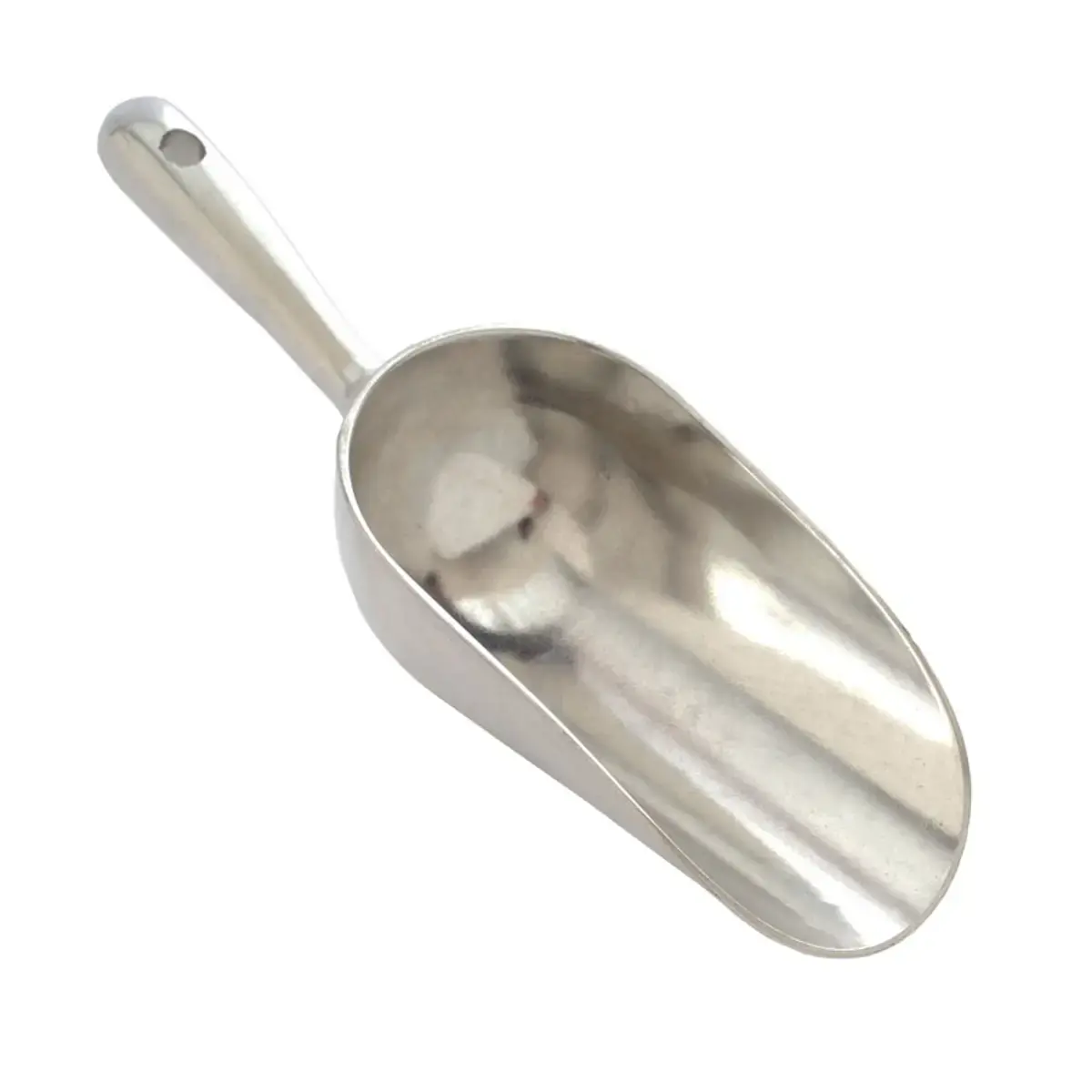Comparison left vs right for a craftsman who doesnt know which one he should buy:
-
l/r same bed size
-
r lower bed for way easier loading/unloading
-
r less likely to crash
-
r less fuel consumption and costs
-
r less expensive to repair
-
r easy to park
-
r easy to get around in narrow places like crowded construction sites or towns
-
r not participating in road arms race
-
l You get taken serious by your fellow carbrained americans because ““trucks”” are normalized and small handy cars are ridiculed.
So unless you are a fragile piece of human, choose the right one.
I agree with the sentiment of this post, but to be fair, you can also carry 3 or 4 passengers in the left vehicle, as opposed to only one in the right.
The main problem is the US fuel economy regulations actually encourage manufacturers to build bigger trucks and SUVs so they get classified into a category that has looser fuel economy requirements.
The extended cab version of the right truck would still tick all the boxes.
Off-road and towing capacity are probably the main feature you give up with that sort of design. Whether or not most people need that is a separate story.
They make kei trucks in 4x4, but you do lose ground clearance.
That being said, what kind of “off road” conditions are any of the trucks really contending with?
Muddy fields when parking at church or boy scouts or whatever.
Whats best is the kei 4x4 is probably significantly better in most off road situations due to its lighter weight and shorter wheel base. You can drive/manuever around things easier and when you are on mud or sand, the lighter weight prevents sinking.
what kind of “off road” conditions are any of the trucks really contending with?
Probably all of the conditions, considering how many of those trucks there are, but it would be fun to see an off-road shootout between the two.
Sounds like a job for Donut Media.
You are right. Still the american truck is hugely oversized, even for 5 persons and cargo. But, for the sake of the argument, imagine standing on the highway. Have a gander at the cars around you. How many people per car do you see? Exactly, 90% of the time there is exactly one person in a car. What makes the american truck an extreme waste of space an ressources, beside being a health hazard to everyone outside of the car.
Cars should get smaller, not bigger.
You’re mostly right. The main problem is that manufacturers chose to ignore the spirit of the US CAFE fuel economy regulations, and instead build everything bigger and bigger. That’s why quarter-ton trucks grew to the size of the F150 in the year 2000 when they were quite a bit smaller before.
It’s not the fault of the regulation. It is the fault of the manufacturers and to an equal extent, of consumers for preferring gigantic vehicles.
And let’s not let GM off the hook for the 1990s Suburban, which began to, quite literally, dominate the roads. Those fuckers were the original huge grocery getter, and they had truly awful turning radius and blind spots. You just couldn’t drive them safely or courteously if you tried. So of course everyone wanted more powerful and bigger vehicles to compete.
I’m actually going to fault regulations on this one. The EPA bases fuel economy requirements on the wheelbase of the vehicle. They used to publish a range of values based every other year or so, but then changed it to a formula. The formula is non-linear, making it neigh impossible to build anything with a small wheelbase anymore. In theory, they could design a small hybrid truck, but would need an obnoxiously long bed to compensate.
I watched a YouTube video on it not terribly long ago, and iirc, a 95 Ford Ranger, if held to the current formula-based regulations, would need 60+ mpg to be produced without major penalties to the company.
The EPA either needs to reevaluate the formula, or start manually publishing the numbers with values that are actually achievable by the industry at scale. Basically, by publishing the formula, manufacturers are able to min-max their designs in all the wrong ways.
EDIT: Updated for clarity and fixed some typos
Yep, I think I saw that video, I was shocked how bad the regulations were. It really makes no financial sense for companies to make smaller trucks.
Really, the fault of the regulations is that the penalties for the number of vehicles in the heavy polluting category weren’t nearly stiff enough. That’s a big part of why the automakers went the opposite direction and just made bigger and heavier vehicles - they could.
Thanks for pointing our the real incentives which are always some bullshit about more money and less regulations - basically the reason capitalism sucks at innovation - it doesn’t care about whats important and in some cases actively hates it
What’s important for you specifically is not what is important to the customer base writ large.
You have problems with fellow consumers that you blame on manufacturers.
Capitalism does not follow the desires of consumers, it follows the desire of shareholders.
This is the most braindead comment I’ve read in a long time.
That doesn’t even make sense in the logic you’ve presented. Shareholders want to maximize value, which means selling more things to consumers, which means selling things consumers want.
If your entire worldview falls apart at the slightest scrutiny, it may be time to re-evaluate said worldview.
When you consider that marketing is intended to manipulate consumers into thinking they want your product, it’s more about convincing people that your product has value, and that they need it, rather than selling something that consumers actually need.
You are not the arbiter on what people “need,” and people do not only purchase or consume things based on “need.” As a hilariously easy example, neither of us “needs” to be here right now having this conversation.
Again, it’s time to re-evaluate the entire worldview
I never claimed to be the arbiter of what people need, but im just saying consumers dont have as much freewill as they claim when they’re actively being manipulated at every corner. Marketing is literally intended to make you feel like you need a product you didn’t previously want.
Look up manufactured scarcity. Great way to make money for shareholders without providing more to consumers. You charge them more for less. Notice any of that recently? Notice any record breaking profits in any industries? Notice any shortages of important things like IDK … housing!!!
I’ll also give you another example of capitalists not giving a fuck about what consumers want: electric cars back in the 1990s. The auto manufacturers realized they would lose their parts and repair businesses, as electric vehicles have fewer moving parts, the oil companies got pissed, so they put some power together and used the federal government to overturn californias electric car act that consumers voted for. The also forcefully recalled electric cars from consumers and crushed them. They did not care if there was demand if they could make more money in the short term by staying the same.
Hell, the very existence of exxon mobile disproves your ideas that companies will innovate in response to demand because they spent their money lying to the public about climate change so they could avoid any innovation at all for as long as possible. So WTF do you mean they care about demand?
Your logic that capitalists only do what consumers want is whats basic and flawed. If thats true, WTF is advertising? You think it’s just a fun hobby that doesn’t work? If advertising doesn’t create false demand, why do it? We have evidence advertising creates demand, therefore advertising works, therefore you need to adjust your worldview to allow for the fact that some amount of the shit that consumers buy is nothing more than light brainwashing. Including you dear.
The difference is that efficient demand incentivizes h switchover. You’re blaming businesses for… Not leading with changes their customers don’t want
I guess I shouldn’t have tried to talk about several concepts at once since your brain skipped past the manufactured scarcity concept, which is far more integral to capitalism.
https://en.wikipedia.org/wiki/Artificial_scarcity
Note that capitalists have been practicing the art of ‘just burn the shit I can’t sell so no one can have it’ since the Dutch East India company burned islands full of spices to make them rarer. O such innovation
Given the usage patterns, most people in the US do not need large trucks. They have been convinced that need them because the auto manufacturers make a lot of money selling trucks.
That’s why the compact trucks are selling like hot cakes. People want trucks, but they don’t necessarily want these behemoths. I love my Santa Cruz.
Even compact trucks are not nearly as small as light trucks from a couple decades ago before regulations encouraged manufacturers to go bigger to avoid penalties.
Basically if you have two trucks with the same engine, but on a smaller wheelbase, the smaller one might be penalized for not being fuel efficient enough while the larger one isn’t. Might as well go big to avoid the cost.
I thought it was very disingenuous of OP to not mention crew capacity between the two trucks at all. I’d assume the bigger truck also has a better towing capacity which may be required. What isn’t required is buying one of these trucks to get groceries and replace your tv every 3 years while commuting to your desk job 1 hour away.
But what about cargo capacity? The beds look pretty much the same size, although I’m sure allowed weight is drastically different
The main post claims the beds are the same size. Technically speaking in terms of volume the kei truck wins due to lower bed height (if we are using max height to pass bridges as our standard). As for weight I’m pretty sure the left truck wins out on total capacity. That said the kei truck is still a remarkably useful minitruck and i wish they had a bigger market in the west.
Thats why we always had larger and smaller versions of trucks.
99% of trucks don’t NEED 3-4 passengers. Same with SUVs. Most are just used to commute back and forth to work.
Half ton trucks should have remained small, while the 1 ton ones should be closer to what the half-ton are sized today.
https://en.wikipedia.org/wiki/Ford_F-Series#/media/File:1953_F100_Diagram.jpg
Look at the original F-100 for a good example. The old Rangers are also what most trucks should look like. Only the people that really use them should be driving these massive trucks around. I honestly hope gas prices spike massively because it’s going to hit idiots that drive this shit the worst.
The name crew can exist for reason, that how pack all your labourers in to job site, now 80% of tradesman don’t have a whole crew of labourers so the point is still there.
I would bet the standard seating for the left truck is five, but you could easily cram six in. Unless the front row is connected, then it would be even more.
There name crew can exist for reason, that how pack all your labourers in to job site
Can’t tow a boat an RV or trailer with the Japanese vehicle. All things Americans do for fun. For work? The Japanese vehicle can’t haul 6,000 lbs of lumbar or steel, nor can it pull another vehicle out of a ditch.
The left one looks a little too expensive to actually haul with. If you needed to move that much wouldn’t something like an Isuzu Grafter make more sense?
If you tow things wouldn’t a van or any 4x4/high powered car be a better choice?
Just gonna keep on posting this

To anyone claiming that the bigger one is the safer one …
https://pubmed.ncbi.nlm.nih.gov/24499113/
https://worldpopulationreview.com/country-rankings/countries-with-the-most-car-accidents
From the Bloomberg & NLM articles
From a safety perspective, kei cars have a lot going for them when compared with American-style SUVs and trucks. Their light weight generates less force in a collision, and their stubby front ends reduce driver blind spots. Research suggests that their occupants are equally safe as those inside full-sized vehicles.
At first, I was going to criticize the collision speed of the example study, but found ( ok, I say found, I mean I googled for 15 seconds ) that the average American collision is occurring at less than 40mph, so good to go there.
Second, I was going to comment on the relative safety of being in the Kei truck and being struck by the 2500HD… but that just goes back to the ‘participating in the arms race’, so feels… stupid.
So, overall: Thanks for providing this. It directly answers the primary concern of ‘what if I hit something tho’. There are some other angles I could nitpick on maybe, but they all feel like a kind of ‘consolation prize’ to the argument.
One thing you also need to remember, is that the smaller car has a far smaller braking distance and is more maneuverable, so is less likely to get in a crash. The lower centre of gravity also decreases the likelihood of a roll-over.
Reminds me of a friend some years back. She was 4’ nothing but insisted on driving a large SUV as it was “safer” in a accident. I’m taller than most but I prefer smaller vehicles like older Cherokees and Volvos so it’s quite the odd difference.
95% of the craftsmen I know have panel vans. Easier to both organize and secure tools and materials, more overall room.
I lived in (and now commute through) a neighborhood of older houses, and higher incomes, so I see a lot of contractor vehicles. It seems like it breaks down as landscapers and lawn services use the pickup trucks; trades companies (plumbers, electricians, HVAC, carpenters, painters, etc.) use vans or box trucks; and the independent guys tend to use Dodge Caravans. Nearby, the university uses fleets of kei trucks (the low-speed versions because “freedom”), Ford Model E vans, and Caravans. I think the landscaping crew has pickups.
There are an increasing number of company pickup trucks, but most of them appear to be pavement princesses, used only for their usual function: transporting egos, not equipment.
Landscaping crews tend to pull trailers though. I imagine that’s why.
It’s also residential. On big commercial and industrial construction sites it’s almost all big but fully functional trucks for exactly the reason you mention; they have to be able to haul trailers and heavy equipment --like generators, water buffalos, sand-blasters and the like-- over unpaved rubble or dirt.
But those are almost all company vehicles in any case.
Ours are utes. Either road versions or 4×4 versions. American trucks sell here but they’re seen as a joke in both capability and practicality, so it’s assumed the owner is very insecure about something or not very intelligent. As a result, they’re very rare.
Until you have an odd size item like a door in frame. Or need to move something like a 1 man post lift. And since you know you won’t be cleaning it out as often so your always going to have extra crap your hauling for no reason. I’m just going off every pro that has shown up for work at my job sites in a van.
I had a 1 ton Ford van for 12 years and I could haul a pallet of flooring or 20 sheets of drywall inside it, as well as lumber 12 feet or shorter. Anything more bulky than what fits inside a van like that would have difficulty fitting inside a 6.5 foot truck bed without a rats nest of ratchet straps and hanging way over the tailgate.
You have the right of it. If it won’t fit in the van, you hook up a trailer. The cost of the van and trailer combined is still a sight less than these living rooms on wheels.
Aren’t the vans we’re discussing here just as big (or even bigger if you consider the height) as the truck? It’s a truck frame with a big enclosed box on top
Yes, but full-size vans aren’t a popular vehicle outside of passenger and tradesmen applications, unlike pickup trucks. I was only pointing out that North Americans apparently prefer to have a passenger vehicle where 40-50% of the wheelbase is unused useless space.
Some are, and yet they still have better visibility and lower center of gravity and fuel economy etc.
Trucks seem to be optimized for niche use but somehow managed to end up being the default for all kinds of uses where other vehicles would be better.
Since Americans are obese, it makes sense that their cars are too.
I was looking for the “America bad” comment, was not disappointed. At least that carried over from reddit.
They are absolutely the driver in this market, like it or not.
American cars were big way before they became obese. Americans have been more suburban and roads were developed before a lot of towns were, so roads are wide and big.
I love small cars. I’m happy to live somewhere with small roads. And I care deeply about living in a walkable city, but obesity is not the reason the US has big cars and the UK has small cars. Similar obesity rate. Different roads. Different fuel costs.
That obesity is quite common in the U.S. is true. Source.
Obesity rates in the UK are not far behind the US. 32% vs 38% according to WHO. Unfortunately most western developed counties are well on the path to where America is regarding obesity. The key difference in terms of car sizes is size of roads, civil planning, gas prices, and marketing. Not obesity.
I was looking for the “America bad” comment comment, was not disappointed. At least our fragile egos carried over from Reddit.
Jesus, you people can’t stop yourselves lol. I love it.
I was the only guy at the marina showing up in a compact Nissan. Got a lot of shit for it from the raised up pickups.
Yet I always had that extra $20 for beers.
It’s a mystery.
Imagine being proud of drinking and driving
Edit: wow, seems your not alone in thinking killing others is a sport 👍
And if they said “yet I always had extra money for video games”, would you have assumed they were playing games while driving? Would “extra money for a bathroom remodel” translate into them doing the actual renovations in the passenger seat while driving?
Imagine making the assumption that just because they can afford to drink, they obviously did it while/before driving.
You appear to be German speaking. That is not what my comment meant: the beer was purchased on the way home and consumed in my home. We would often cross paths at the nearest gas station to the marina where I’d buy a case and they’d only be able to fill their tanks.
Don’t know what that has to do with me being German, my English is good enough to see that you said „showed up at the marina and had $20 for beer“ and nothing about a gas station, funny.
Sure, the US has 40k traffic deaths, DUI deaths make up >30% (3rd place! 👍), the legal limit is still BAC 0.08% basically everywhere, but suddenly you weren’t actually meeting at the marina but at a gas station and everybody just drank alone at home.
Sure, buddy 🤡
Okay I was just giving you the benefit of the doubt. My mistake, clearly. I have no business being cordial given your apparent anger on this subject. So: argue into the ether over an anecdotal memory I have about having a vehicle with fuel economy that saved me money.
Imagine thinking a straw man argument matters…
They didn’t say anything about drinking and driving, why do you think it’s okay to assume it?
Yep. I’m an American tradesman and the trucks that the guys drive are way too beefy for what they actually do.
I’ve gotten by with small Toyota trucks, and rav 4s…much to the chagrin of the good old boys. Should have seen their face when I rolled up in a prius…till I tell em I get 50 mpg easy.
I would love a small little truck like this one in the photo.
The most handy truck I had doing construction when I was a kid was out Mazda B2200 with the Perkins diesel. It’d go forever on no fuel and was perfect for grabbing a few tools for a quick run to a job site.
deleted by creator
You can get one. They get imported. Search for Japanese car imports to your local area. Search for Kei Truck and you’ll find em. You can get an awd turbo diesel for around 8-10k
Yea I never actually looked into it, i alwats figured the import would be expensive. Right now my situation is a little…um…fkd up… but when I have enough to invest in another vehicle, i will def consider it. I would love one. And would be perfect for my uses. I’m sure I’d get labeled a humorous title by the lovely gentlemen on the job sites. I live in a rural area. And the boys love their big trucks. And guns. And a whole manner of things.
people bring them in all the time. I live in Portland and there’s a guy in town who imports them and fixes them up (@vanlifenorthwest). They’ve gotten popular tho and aren’t the bargains that they once were
A friend of mine bought one; essentially once a car is a classic or something like 25 years old they’re not subjected to the same regulations that newer cars have to meet. Since car culture in Japan is very different than here in the states a lot have lived their lives in garages and have really low miles and if you know what model to get, parts are still readily available. The only issue is driving a right hand drive vehicle in this country takes some getting used to. I drove his for a couple of days and right hand turns in particular feel sketchy
Yea the antique vehicle code or whatever. There’s no emissions inspection where I live anyway lol. I wonder how these trucks are in the snow. I lived in Portland for 6 months and it snowed once barely… but where I’m at now, we get swamped ftmp. I highly doubt there is anyone around here importing these vehicles…maybe in the city though. I’ll have to research. Thanks for the info. Totally forgot about the driver side thing lol.
Also spent a lot of time in the industry (drywall, lath, and plaster). Key cars top out somewhere around 750 pounds of capacity, and I could early blow through that with brining materials to a job site, or hauling stuff to the dump.
Key cars are cool, but you also need other solutions in place for materials delivery and hauling. American trucks are kind of a one size fits all approach to construction. Your truck for heavy hauling is also the truck you use for light hauling.
Most Kei trucks do top out around 750lbs, but I know for a fact that there are models of Honda Acty that have a rated bed load around 1500lbs and a rated towing capacity around 2200lbs
TIL. That’s pretty cool.
Although the payload capacity of an American truck is often double that. It’s pretty easy to hit 1500lbs with 10 bags of cement, a person, and some gear. I’m assuming Japan has other solutions for hauling that are pretty common. I’m guessing there are some pretty big differences in their construction workflows and logistics that make key cars practical.
IMHO, contractor’s work trucks aren’t the problem is the US. The bigger problem is that most of those vehicles are sold to private citizens who think the space is convenient for an occasional camping trip or an epic Costco run.
I don’t know about Japan but here in Europe I just see tradesmen, needing large quantities, getting their materials delivered on a pallet from a semi-trailer.
Most use vans though for carrying their equipment, since you usually don’t want your gear sitting outside, like it would on a pickup truck.
Yea for sure. I’m not in a line of business where I need to he hauling stuff like that anymore. I mostly stick to the finish work these days. So I can get by w a car. If I were say a plumber or doing gutters or whatever, I could see how it’s reasonable to have say a box truck etc.
Most tradesmen I know haul a trailer with their tools and supplies so that they have the option of unhooking and leaving all that weight behind without unloading the truck. Or, conversely, unhooking at the jobsite so that their workers can keep going while they run for supplies.
Willing to bet right is owned by a true worker doing real work and left is some trumpet who uses that ugly tank to drive to Walmart to buy toilet paper.
Based on what I have seen at construction sites in Asia and the US you are correct.
Most construction workers don’t actually need to move all that much stuff so they tend towards regular vehicles or at most vans or small pickups. Raw material is delivered on semis. Every time I have known someone who owns a vehicle like that they could manage with a sedan. When I go out to a site my gear weights about as much as I do and it’s with two techs in an economy car.
Best example was one place I was at had these fake union jobs. One guy’s whole job was to babysit a machine. He drove one of those. Lazy mofo. Never packed lunch, wouldn’t sweep up his “workspace”, his entire day was on his phone.
One of the electricians in my town has a minivan and I’ve seen him use it to bring an entire 5x14 enclosed trailer full of gear to a jobsite a few times.
I am trying to think and the only construction worker I have ever known to have one of those oversized trucks was a welder. So about 1 out of like a 100. And it was constantly having issues.
Most of them have those job trailers you described when they need to move and secure a bunch of stuff at site. Safer anyway for an electrician since they got those wire spools.
The electrician I’m talking about also has a work area in the front (side closest to the vehicle) which has a workbench and a charging port for a laptop. Actually works very well for him because he can unbox panel and meter boxes and prep them right there without having to make a mess in a client’s house. Probably better than an oversized truck.
I also like the idea of trailers because if you haul something which breaks or damages the trailer, it’s probably cheaper to fix/replace the trailer than a truck. Maybe just me though.
This is why I loved my Nissan d21 when I had it
This is a simillar truck compared to what I had

Why isn’t that an option anymore‽ I’d absolutely love my 94 Ford ranger again, and I’m totes jelly of the old school Tacoma owners.
Yeah everyone I know would love a nice small ranger or Tacoma but everything is giant now
Brooo I’m jelly of the old school Toyota truck owners. From before it was called the Tacoma
The Ford Maverick scratches that old Ranger itch pretty well. I’ve had one for about a year and love it.
I heard the markup on those were crazy due to demand. Did you get a decent deal?
Yeah I ordered from Ford directly, no dealer markup.
The emissions laws are terribly written. Combined with safety laws, makes going bigger the sensible option. And to the average buyer, go a little bigger than you absolutely need is definitely something to think about.
I had a '95 ranger for 15 years. Little 4-banger that I beat the shit out of, and moved half way across the country (and back, fuck Missouri!) in. Now I have a '12 Ranger. Similar in size, maybe a ltitle bigger. But they don’t sell them anymore in this size. I’m not sure what I’ll get next. I like the small pickups, but I wouldn’t want to try to drive the little one in the picture on the local freeways.
deleted by creator
A friend died in a Ford Ranger. They literally have no crumple zone.
I like those old school trucks. Perfect size. No over the top gaudy BS. Just simple and utilitarian.
deleted by creator
We only have large trucks in the USA due to CAFE restrictions. Basically in order to sell a small truck in the USA , it has to have phenomenal gas mileage or the manufacturer has to pay the government fees.
The government is the cause for these stupid large trucks.There was also a lot of targeted ads that destroyed masculinity if you owned a car. Truck companies were claiming a truck made you more handsome, resourceful, trustworthy and all sorts of other claims that somehow made you a better person for owning a truck.
It’s easy to fix, just apply CAFE also to those pickup trucks. Today it’s just applied to regular cars
It sounds easy to fix, but reality is the automotive and oil industries have lobbied (bribed) politicians to never do that.
I’d never heard of CAFE fees before;
https://en.wikipedia.org/wiki/Corporate_average_fuel_economy?wprov=sfla1
I think this is the specific bit that you are referencing;
CAFE has separate standards for “passenger cars” and “light trucks” even if the majority of “light trucks” are being used as passenger vehicles. The market share of “light trucks” grew steadily from 9.7% in 1979 to 47% in 2001, remained in 50% numbers up to 2011.
Interesting also;
In addition, a Gas Guzzler Tax is levied on individual passenger car models (but not trucks, vans, minivans, or SUVs) that get less than 22.5 miles per US gallon (10.5 L/100 km).
Which is funny because the opposite law in Japan is what resulted in the tiny truck on the right. They have a class of cars, Kei cars, that are small and very economical. So if a car was too big and wasn’t efficient enough they’d have to pay fees… so they went tiny.
This was the actual purpose of CAFE laws, but lobbying from the auto industry carved out exceptions for “light trucks” (meaning not-semi trucks). This exception is also why SUVs, classified as light trucks, have largely replaced wagons.
Thanks so much for pointing out the CAFE restrictions. I never knew they existed, and it explains much about the growth of autos in general since 2011.
The kei trucks are also illegal to import in to the U.S., if they’re less than 25 years old. “Land of the free,” folks.
Kei trucks due have the issue of not being great to actual haul things in the mountainous areas (a tradeoff of the small engine). They make a non-kei version that has a bigger engine for situations like that.
That being said, I think if roads and such were bigger here (Japan), we’d definitely seem more American-style vehicles. Miyazaki (Ghibli) had lots of environmental themes in his works and it wasn’t because people were doing a great job of taking care of the environment. I have seen American trucks driving around Tokyo (which is silly because they can’t even fit down some streets) as well as sports cars and even hummers. Yeah, some are driven by foreigners, but there are still plenty of Japanese who import and drive US vehicles. The second biggest thing stopping that is the cost of getting it over here, inspected, registered, etc. Some humans just want those and want to show off their status and Japanese people are just people, after all (as much as the internet loves to pretend otherwise).
I get the point your trying to prove but i don’t think it’s fair to compare these 2 as they are meant for different things and also brings in the assumption that all American craftsman vehicles are 2500HD’s, which is not true.
Now I agree, people using the one on the left specifically as a daily driver is actually overkill and are not using it for what it’s supposed to be used for. The one on the left is a 2500HD. They are SUPPOSED to be used for hauling and carrying equipment. The crew cab is meant to also transport the crew that is for said equipment.
The one the right is specifically meant what appears to be lighter duty use and hauling. I agree that people should use the right tool for the job. I find the one on the right to be very practical. But for the sake of this post as a means to compare Japanese craftsman vehicles to American.
You should actually show something actually comparable. Like a ford ranger with a standard cab. Which might be about the same size and power. Maybe even the same bed size. Not something that has HD (Heavy duty) in its name.
Anything American should be avoided. Their food is full of sugar, cars are big and useless and internet companies always try to screw their users.
Excited for when American trucks just become literal tanks. Seems to be the trend since everything here constantly needs to be bigger bigger bigger for suburbanites. Who needs yards when you can have bigger houses? Who needs a healthy environment when you can drive gas guzzling giants? We’re so unprepared to deal with climate change it’s depressing. I want to believe that our culture will eventually naturally see the value in smaller, simpler things, but the trends haven’t changed yet and I don’t see why they would.
We’re choosing Mad Max world in the USA.
The rest of the planet should plan accordingly by stocking spike strips or just not paving easy access to their homes. The Americans are transformed into toddling molerats once out of their vehicles and easily destroyed.
I do woodworking and have gotten by with my Subaru but occasionally need to pick up 4x8 sheets of plywood, OSB, or even drywall for the house. An electric kei truck would be perfect. I’m rooting for something like the Canoo or Telo EV truck to make it to market
Have you tried using a roof rack to strap the plywood down?
Most roof racks are not rated for much weight. A few sheets would be fine
This is what I do but not when it’s raining. Same with drywall.



















